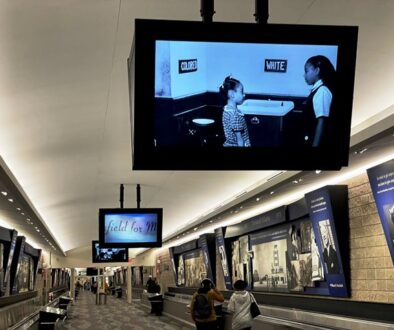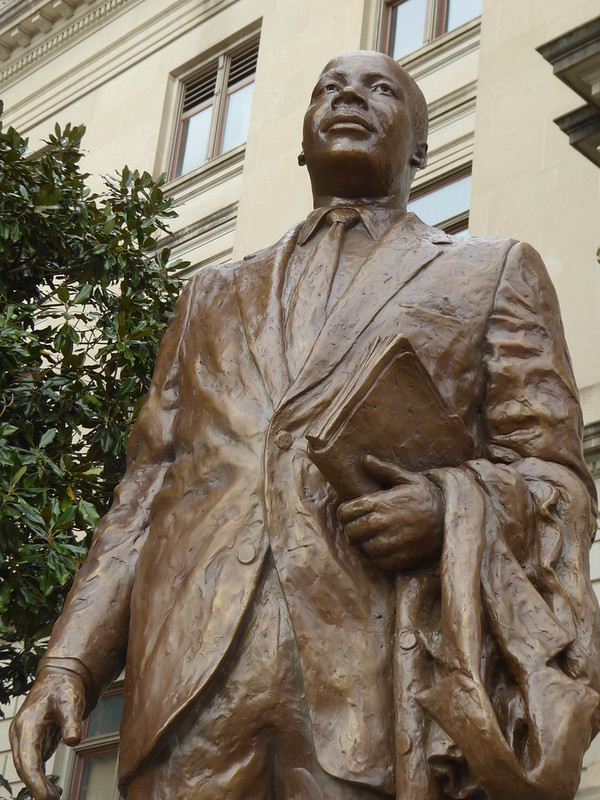Most civil rights memorials celebrate victories. Albany, Georgia is different.
Unlike Montgomery or Greensboro, there was no triumph here. As visitors learn at the Albany Civil Rights Institute, this is the city where Martin Luther King Jr. lost. He couldn’t even manage to stay in jail. But his failure in 1961 to integrate this southwest Georgia city played a crucial role in the progress of the Civil Rights Movement.
King learned from his mistakes and honed his protest strategies.
It’s also the city where the Civil Rights struggle literally found its voice. This is where a group of female performers, The Freedom Singers, was formed. One of the original members leads a stirring monthly concert of protest songs that will literally have you on your feet vowing that “We Shall Overcome.” (Watch a video clip below.)`
For visitors today it all centers on an innovative museum and research center. Albany isn’t on major highways and is several hours from other cities, but it’s a worthwhile detour for civil rights travelers — an easy addition for those following the familiar Atlanta to Montgomery itinerary.
It’s also just 40 miles from Plains, Georgia, President Jimmy Carter’s hometown. The former President still leads Sunday school lessons here, and it’s an unforgettable experience to see him. As he ages, classes are less frequent, but look for info here.
Plan your visit for the second Saturday of the month when Rutha Mae Harris leads The Freedom Singers in a concert that’s free with admission to the excellent Albany Civil Rights Institute. The singing group was founded in 1961 to publicize and inspire protesters. It also helped raise money for the underfunded Civil Rights Movement with benefit concerts around the country.
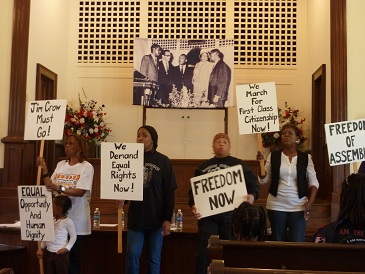
Harris was just 21-years old when she joined the group in Albany. Later she became one of the founding members of Sweet Honey in the Rock. She has performed at the White House and the Kennedy Center, and when you hear her belt out “This Little Light of Mine” you’ll understand why.
The music played a crucial role in the Civil Rights Movement. “The songs gave us hope, they helped us overcome our fears,” Harris says.
The concert covers the history of the movement through song. The singers carry protest signs and sing about integration and violence. The harmonies — and the stories — are stirring. The concert is held in the Mt. Zion Baptist Church, which is next door to the Albany Civil Rights Institute. It was at the this pulpit, that King preached and urged the residents on to protest — and jail.
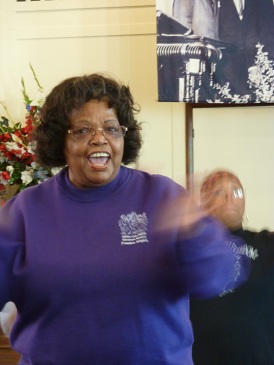
Today’s Freedom Singers include a new generation of female African-Americans, including Harris’ niece and an assistant district attorney, a post that would have been unimaginable during the protests.
That brings us to what became known as the Albany Movement.
King was invited to town to help what was a broad protest against segregation. But he found a cunning adversary in Sheriff Laurie Pritchett. The lawman had studied King.s tactics and knew the minister employed non-violent techniques developed by Gandhi during protests to overthrown British rule of India. In the U.S. South, the protester’s strategy had become “jail not bail.”
But Pritchett realized that the British had been overwhelmed because they attacked the protesters and lacked the room to incarcerate them all. He wasn’t going to make the same mistake.
The sheriff arranged with surrounding counties to use their jails when Albany’s were overwhelmed. By December 1961, there were more than 700 protesters sitting in cells across the region. The conditions in the rural county jails were atrocious, making the ordeal harder on those arrested.
“King ran out of nonviolent protesters before Pritchett ran out of jail cells,” said Lee Formwalt, executive director of the Albany Civil Rights Institute. “From King’s perspective. he failed.”
Compounding the problem, King himself was denied the symbolism of sitting in jail. After three days behind bars, someone bailed him out and paid his fine.
King returned to Albany months later and again was jailed for a few days. But by then King was running out of protesters. Ultimately he left town defeated.
He concluded that taking on an entire Jim Crow system diluted the message. If the issue was whether Blacks could sit at a lunch counter, or sit on a bus, it was easy for the nation to understand — and sympathize. When the point of protest, though, became an entire social structure, it was much harder to find success.
He would draw on these lessons in the years to come during campaigns in Birmingham and Selma.
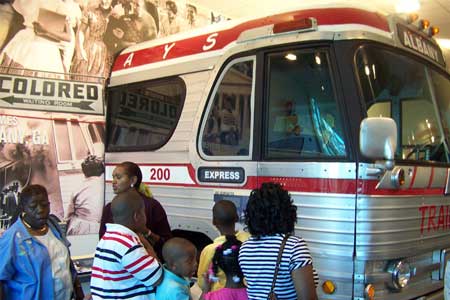
Albany Civil Rights Institute
The story is told in the an innovative museum with professional multimedia exhibits. You can watch the old newscasts in a mock early ’60s living room that looks straight out of Leave it to Beaver.
Other exhibits suggest that perhaps King didn’t fail in Albany: Two years after the protests an African-American was nearly elected to the city council. Gradually segregation ended.
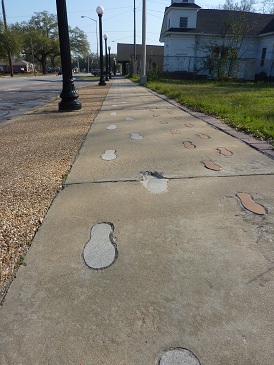
After visiting the museum, walk across the street to the historic marker in front of the Shiloh Baptist Church. It’s here that the first mass meetings were held before marches. And then follow the foot prints in the sidewalk. They retrace the steps protesters took on their way to the bus station and other segregated sites in town.
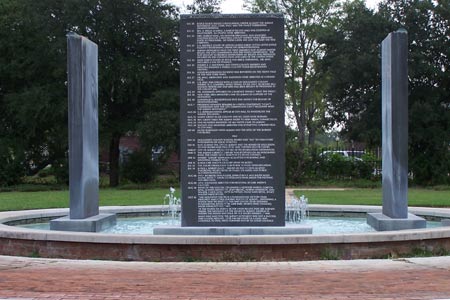
Along the way, stop at the Albany Civil Rights Memorial in Charles Sherrod Civil Rights Park (intersection of South Jackson Street and Highland Avenue). Sherrod came to Albany in 1961 with the Student Nonviolent Coordinating Committee to organize a voter registration drive. The monument itself includes four Black marble columns with a timeline of national and local events in the Civil Rights Movement. Water flows from all of them into a pool of water.
Guidebook
Georgia and Albany travel info.
Hotels
Albany’s hotel and motel options are mostly limited to national chains.The city’s top hotel is the Hilton Garden Inn. Try to get a room in the front for a view of Ray Charles, seated at a piano. The statue of the Albany native is lit all night and plays his songs.

Dining
It’s no surprise Albany excels at Southern cooking.
For breakfast, try a biscuit and eggs at Pearly’s Famous Country Cooking, 814 N. Slappey Blvd., 229/432-0141
But others swear by Maryland Fried Chicken, a locally owned fast-food style eatery.
For white-table cloth dining, check out Henry Campbell’s Steakhouse
More to see
Albany is packed with family-friendly sites.
Head to Chehaw, an 800-acre nature park with a 100-acre accredited zoo where animals are uncaged and free to roam in large natural areas. Standouts include meerkats, bison and bears.
Albany is a river city, and home to an impressive aquarium. Designed by the same folks who planned the award-winning Chatanooga, Tenn., aquarium, Albany’s Flint RiverQuarium includes a 175,000 gallon tank, and an open-air blue hole spring with hundreds of different aquatic species.
Hear the Music
You can find The Freedom Singers on several compilations of songs from Civil Rights Era.


